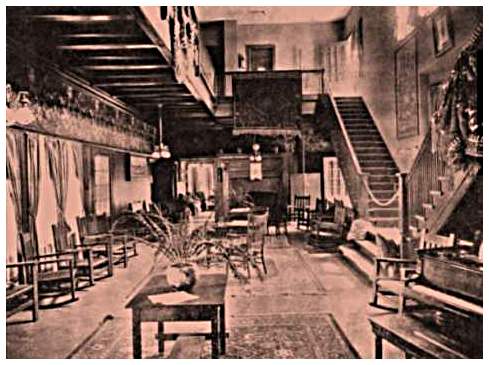Wisconsin's state building was a departure from the ordinary semi-classic style of architecture prevalent in 1904 exposition buildings, as it was conceived with an English domestic style. The two-story structure, with its plastered walls and red gable roofs, amid the green foliage, provided a charming effect, in contrast to the more stately architecture. Built at a cost of 14,750 dollars, it was 90 by 50 feet and was dedicated on May 29.
Inside, grand staircase were finished in Flemish oak, and the furniture was the "mission style," which harmonized with the woodwork. Indian blankets in rich dull reds and blues hung from the railing of the wall, which emphasized the "mission" effect.
In the Palace of Educational, exhibits covered branches of school work from the Kindergarten to the State University. Extensive displays of ores, polished granites
and pottery clays were in the Palace of Mines. Their Forestry display included a great variety of polished woods. Wisconsin made its best record in the display in the Agricultural Palace, which was made up of agricultural products of the state and of butter and cheese exhibits.
Lee Gaskins' AT THE FAIR The 1904 St. Louis World's Fair
Web Design and Art/Illustration copyrighted 2008
Though not a state exhibition, Wisconsin companies displayed in many of the palaces. A Pawling & Harnischfeger 50-ton type "AN" bridge crane with a 10-ton type "A" trolley with standard a block in the Palace of Machinery. The crane is stamped with the text "Pawling & Harnischfeger Builders, Milwaukee, Wisconsin., Main Hoist 100,000 Lbs., Auxiliary 2,000 Lbs., No. 1054." There are booths from various companies (Curtis Steam Turbine, Westinghouse, Weber Gas & Gasoline, Waters Pierce Oil Co.) on the floor of the room.




